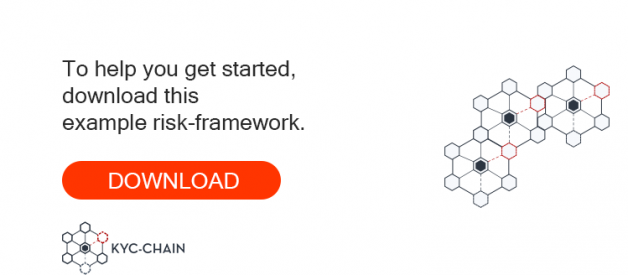
Money laundering has been around pretty much since money was invented. While governments and international agencies have strived to do more and more to prevent it from happening, there have been some unbelievable cases over the years. It is estimated that approximately $2 trillion is laundered every year, but we wanted to highlight some of the biggest cases of all time.
5. Bank of Credit and Commerce International (BCCI) ? $23 Billion
BCCI was founded in 1972 by Pakistani businessman Agha Hassan Abedi in Luxembourg. The bank received the majority of its funding from Abu Dhabi, and while it based its headquarters in Belgium, it soon expanded globally and primarily operated out of the United Kingdom.
The bank grew relatively quickly, and it didn?t take long for the trouble to start as in 1988, BCCI faced it?s first allegations of money laundering in the US. The allegations turned out to be true, and it only went downhill from there.
By 1990, allegations arose following an investigation by Price Waterhouse that BCCI was falsifying transactions. At the end of the year, it came to light that large, unrecorded deposits were being made at the bank. BCCI was accused of laundering money for figures such as Saddam Hussein, Abu Nidal, Samuel Doe, and other unsavory characters.
In 1991, the bank was closed in the UK by the Bank of England, and elsewhere across the globe. A year later, the Bank of England faced massive backlash for failing to act sooner.
Although BCCI had been liquidated and was no longer running, it still owed over 10 billion to creditors. Liquidators then sued the Bank of England, alleging that they had been reckless in their regulation of BCCI and should have seen the warning signs sooner. Unfortunately, there was no resolution. The case against the Bank of England was dropped, BCCI no longer existed, and liquidators claimed 75% of the money owed to creditors had been paid. Case closed.

4. Nauru ? $70 Billion
Nauru is the smallest island nation in the world with a shady past and an equally shady present. The island is northeast of Australia, and was mostly destroyed by phosphate mining in the 20th century.
After gaining independence from the British Empire, Nauru received a massive payout from Australia for the profits from the mining, which made it one of the wealthiest nations in the world. The money was quickly squandered by a corrupt and incompetent government with hair-brained schemes ? one of their ideas to drive income was to make a musical about Leonardo Da Vinci which was an utter flop.
In the 1990s, Nauru transformed itself into a tax haven, but a very dirty one. Russia quickly took interest, as did al-Qaeda, and began laundering money through shell banks. Nauru didn?t verify the identity of it?s banking customers and didn?t ask questions. The government began to sell passports, banking licenses, and diplomatic favors to sweeten the deal. In 2002, the US treasury designated Nauru a money laundering state and introduced harsh sanctions rivalling those placed on Iraq. By 2005, Nauru had passed anti-money laundering (AML) and tax haven laws, with help from the Financial Action Task Force (FATF).
Unfortunately, Nauru faces a different set of problems today. Since 2001, Nauru has been paid a hefty sum to be an offshore asylum seeker processing center for Australia. Any asylum seeker who comes to Australia by boat is immediately sent to Nauru, and conditions are questionable at best. Various countries, human rights organizations, and the United Nations have condemned Australia for the detention of refugees on Nauru.
3. Danske Bank ? $229 Billion
This is the most recent scandal on our list as it became international news in 2018, but the repercussions are ongoing. The scandal has now been called the largest in Europe to date. To understand the scope of this money laundering scandal we need to go all the way back to 2007, when Danske Bank got its first and only Estonian branch.
Danske Bank was Denmark?s largest lender and had a good reputation on the international market. In 2007, Danske Bank took over Sampo Bank and that included Sampo Bank?s Estonian branch. It didn?t take long for the trouble to start.
Just a few short months later, the bank was under fire from Estonia?s financial minister and received warnings from Russia?s central bank that the branch was being used for suspiciously large transactions. If you guessed that nothing happened as a result of these warning, then you are correct.
By 2010, the executive board of Danske Bank was aware of the large amount of deposits coming from Russia but decided they were comfortable with what was happening. The bank continued to accept large deposits from non-residents with little to no intervention. By 2013, 99% of the banks profits came from non-residents, most of them coming from Russia or ex-Soviet countries.
At the end of 2013, a whisteblower came forward to senior executives, and although it was discussed, once again, nothing happened. It wasn?t until 2016 that Danske Bank stopped doing business with non-residents and in 2017, the world finally started paying attention. It was time for Danske Bank to face the music.
The bank was forced to stop doing business in Estonia, several executives were charged, was fined the equivalent of $2 million by Danish authorities and various international authorities are currently trying to determine how much they are going to fine Danske Bank. Deutsche Bank is also under investigation for potentially having a role in the money laundering scheme. Another case of red flags being ignored for financial profit.
2. Standard Chartered Bank ? $250 Billion
Standard Chartered Bank is a UK institution that has been around officially since 1969, but it?s problems didn?t start until the 2000s. In 2004, Standard Chartered was already having problems with the Federal Reserve and the New York regulator with its lack of AML practices, and signed a letter agreeing to clean up its act.
Throughout 2005 and 2006, the bank proceeded to disregard its agreement, and was breaking sanctions against Iran by working with Iranian customers. Standard Chartered was fined $670 million in 2012 for their transgressions, but the fine did little to stop their illegal practices.
In 2019, the Federal Reserve issued a cease and desist to Standard Chartered for continuing to fail to implement AML practices and for ignoring sanctions against Burma, Zimbabwe, Iran, Cuba, Sudan, and Syria. The Financial Conduct Authority (FCA) in the UK also found serious shortcomings in the bank?s AML controls, specifically regarding customer due diligence. Both UK and US authorities issued fines to Standard Chartered, totalling $1.1 billion.
1. Wachovia Bank ? $380 Billion
Wachovia was once one of the largest US banks before it was purchased by Wells Fargo during the 2008 financial crisis, and it is also responsible for the largest money laundering case of all time. It started with a major drug bust in 2006, when a DC-9 jet was intercepted in the Gulf of Mexico and found to be full of 5.7 tons of cocaine.
However, there was something more important than copious amounts of drugs ? a paper trail leading to a 22 month investigation by the US Drug Enforcement Administration (DEA) eventually leading to Wachovia Bank. But to understand how this happened, we have to go back to 2004.
It started with Wachovia conducting business with casas de cambio (CDCs) in Mexico. CDCs are essentially currency exchange houses where someone can bring in cash, then send it to a bank account and exchange the currency. Not surprisingly, even in 2004 CDCs were flagged as being risky by financial institutions given the potential money laundering that could occur, and Wachovia knew of the risks involved.
CDCs can be a legitimate way for banks to enter the Hispanic market, as long as both sides are implementing AML procedures. While other banks were taking steps away from working with CDCs given their role in funding drug cartels, Wachovia was ramping up business.
Naturally, there was a whistleblower. Martin Woods joined Wachovia as a money laundering reporting officer in 2005. Woods quickly started finding suspicious transactions going on through CDCs and filed several suspicious activity reports (SARs) in 2006.
He also noticed a lack of know your customer (KYC) information, leading him to suspect that Mexican drug cartels were laundering money through the CDCs. Unsurprisingly, Wachovia reprimanded Woods for his actions and he was told to stop asking questions, but Woods knew something illegal was happening and wasn?t going to let it rest. At the same time, US federal law enforcement was starting to look into Wachovia?s activities with CDCs as well.
In 2007, facing pressure from the US attorney?s office, Wachovia gradually phased out doing business with CDCs completely. Woods was continuing to file SARs, and Wachovia reacted by angrily, telling him he had no right to access the documents he had been using to file SARs.
As the DEA was working on their own investigation, Woods got in touch with the agency, alerting them to Wachovia?s involvement. Once the scandal was out in the open, Wachovia managed to escape prosecution by paying an $160 million fine and promising to increase it?s AML procedures.
Looking across this list, it?s sad to see that not much has changed in the last 40 years when it comes to money laundering. While AML and KYC procedures have increased, some banks have made it absolutely clear that all they care about is making a profit. It?s equally worrying to see whistleblowers ignored time and time again.
It?s no surprise then that cryptocurrencies have been steadily increasing in popularity as financial institutions have betrayed our trust far too often. Keep in mind that these are just the five largest scandals to date, many more have taken place, and many more will as the years pass.



